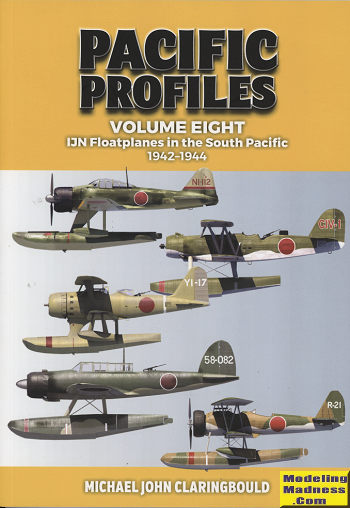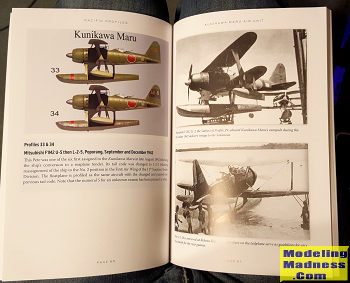 During
the 1930s, the Japanese put forth considerable effort developing float planes.
This was somewhat true of other major nations as floatplanes were used on
capital ships to help with spotting and with reconnaissance. However, the
Japanese also developed types for fairly long range reconnaissance as well as
for some fleet defense.
During
the 1930s, the Japanese put forth considerable effort developing float planes.
This was somewhat true of other major nations as floatplanes were used on
capital ships to help with spotting and with reconnaissance. However, the
Japanese also developed types for fairly long range reconnaissance as well as
for some fleet defense.
Unable to build airfields with much speed, it was not
uncommon for seaplane bases to be established in forward areas. This was
particularly true of the Solomons campaign, as the Japanese Army moved down the
chain early in the war. These aircraft were generally ones that were based on
seaplane tenders, though not always the case. Tenders could be used as
floatplane transports as well, bringing replacement aircraft or units from Japan
as needed.
Thanks to the additional weight and drag of the floats,
even floatplane fighters were not the equal of Allied fighters of the early war,
though these were useful against larger aircraft. Their ability to land on water
made them useful for scouting as well, for the IJN put a lot of emphasis on
range with their strictly recon types.
Floatplane units of the South Seas area are not well
documented and the frequent redesignation of units makes research more difficult
than usual when dealing with Japanese units in the theater. However the author
has done a remarkable job of clearing up what is, at times, a fairly muddled
situation. This is not helped by a relative dearth of photographic evidence.
 The
book follows a fairly standard format for the series, starting with an
introduction that includes pre-war markings and a description of the R-Area
force. We then get into the various units. Each of these
units
are covered in greater or lesser detail, depending on how long they operated in
theater. Not surprising is that many of these are the units based on tenders.
The
book follows a fairly standard format for the series, starting with an
introduction that includes pre-war markings and a description of the R-Area
force. We then get into the various units. Each of these
units
are covered in greater or lesser detail, depending on how long they operated in
theater. Not surprising is that many of these are the units based on tenders.
As usual, there are full color profiles associated with
each unit. Each full color profile provides
information on that particular aircraft. No lengthy pilot stories or background
history on this as it concentrates on the aircraft and units involved in the
conflict. The book also includes some nice art
work spread throughout the book. There is also a section on miscellaneous units
as well as those planes assigned to capital ships.
It all makes for a superb reference book for the modeler
and enthusiast and well worth the price of admission. I very much like this series and look forward to each new
volume. Most highly recommended.
September 2022
Copyright ModelingMadness.com. All rights reserved. No
reproduction in part or in whole without express permission.
Review book courtesy of
Casemate Publishers. You can get your
copy from
this link.
If you would like your product reviewed fairly and quickly, please
contact the editor or see other details in the
Note to
Contributors.
 During
the 1930s, the Japanese put forth considerable effort developing float planes.
This was somewhat true of other major nations as floatplanes were used on
capital ships to help with spotting and with reconnaissance. However, the
Japanese also developed types for fairly long range reconnaissance as well as
for some fleet defense.
During
the 1930s, the Japanese put forth considerable effort developing float planes.
This was somewhat true of other major nations as floatplanes were used on
capital ships to help with spotting and with reconnaissance. However, the
Japanese also developed types for fairly long range reconnaissance as well as
for some fleet defense.  The
book follows a fairly standard format for the series, starting with an
introduction that includes pre-war markings and a description of the R-Area
force. We then get into the various units. Each of these
units
are covered in greater or lesser detail, depending on how long they operated in
theater. Not surprising is that many of these are the units based on tenders.
The
book follows a fairly standard format for the series, starting with an
introduction that includes pre-war markings and a description of the R-Area
force. We then get into the various units. Each of these
units
are covered in greater or lesser detail, depending on how long they operated in
theater. Not surprising is that many of these are the units based on tenders.